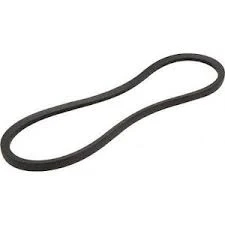- Arabic
- French
- Russian
- Spanish
- Portuguese
- Turkish
- Armenian
- English
- Albanian
- Amharic
- Azerbaijani
- Basque
- Belarusian
- Bengali
- Bosnian
- Bulgarian
- Catalan
- Cebuano
- Corsican
- Croatian
- Czech
- Danish
- Dutch
- Afrikaans
- Esperanto
- Estonian
- Finnish
- Frisian
- Galician
- Georgian
- German
- Greek
- Gujarati
- Haitian Creole
- hausa
- hawaiian
- Hebrew
- Hindi
- Miao
- Hungarian
- Icelandic
- igbo
- Indonesian
- irish
- Italian
- Japanese
- Javanese
- Kannada
- kazakh
- Khmer
- Rwandese
- Korean
- Kurdish
- Kyrgyz
- Lao
- Latin
- Latvian
- Lithuanian
- Luxembourgish
- Macedonian
- Malgashi
- Malay
- Malayalam
- Maltese
- Maori
- Marathi
- Mongolian
- Myanmar
- Nepali
- Norwegian
- Norwegian
- Occitan
- Pashto
- Persian
- Polish
- Punjabi
- Romanian
- Samoan
- Scottish Gaelic
- Serbian
- Sesotho
- Shona
- Sindhi
- Sinhala
- Slovak
- Slovenian
- Somali
- Sundanese
- Swahili
- Swedish
- Tagalog
- Tajik
- Tamil
- Tatar
- Telugu
- Thai
- Turkmen
- Ukrainian
- Urdu
- Uighur
- Uzbek
- Vietnamese
- Welsh
- Bantu
- Yiddish
- Yoruba
- Zulu
Aug . 29, 2024 06:38 Back to list
Flat and V Belts - High-Quality Power Transmission Solutions
Understanding Flat and V Belts A Comprehensive Overview
In the world of mechanical engineering and industrial machinery, belts play a crucial role in power transmission. Among the various types of belts used, flat belts and V belts are two of the most common. Each has its unique characteristics, applications, and advantages, making them suitable for different operational requirements.
Understanding Flat and V Belts A Comprehensive Overview
On the other hand, V belts have a trapezoidal cross-section, which allows for a more secure grip on the pulleys. This design enhances their ability to transmit higher torque loads when compared to flat belts. V belts are widely used in automotive engines, industrial equipment, and many household appliances due to their effectiveness in absorbing vibrations and accommodating misalignments. The wedging action of V belts in the pulley grooves provides a tighter grip, reducing the chances of slippage even under heavy load conditions.
flat and v belt

In terms of maintenance, both types of belts require regular inspections to ensure optimal performance. Flat belts may need periodic tightening and replacement due to wear, while V belts have a long lifespan but can stretch over time, necessitating readjustment and eventual replacement.
Choosing between flat and V belts depends largely on specific application requirements. For applications needing high speed and low power transmission, flat belts are often preferred. Conversely, for situations where high torque and efficiency are paramount, V belts are typically the better choice.
In conclusion, understanding the differences between flat and V belts is essential for anyone involved in machine design, engineering, or maintenance. Each belt type offers distinct advantages, and selecting the right belt can significantly enhance the performance and reliability of machinery. Whether in industrial settings or everyday applications, belts remain an integral component of mechanical systems, ensuring smooth and efficient operation.
-
Upgrade Power Steering Pump Belt for Smooth, Quiet Operation
NewsAug.27,2025
-
Precision Timing Belt & Chain: Engine Performance & Durability
NewsAug.26,2025
-
Precision Lathe Drive Belts: Durable & Reliable Performance
NewsAug.25,2025
-
84.5 Serpentine Belt: Durable & Precision Fit for Your Engine
NewsAug.24,2025
-
Premium Ribbed Drive Belts for Quiet Power Transmission
NewsAug.23,2025
-
High-Performance Vehicle Timing Belt for Engine Precision
NewsAug.22,2025

